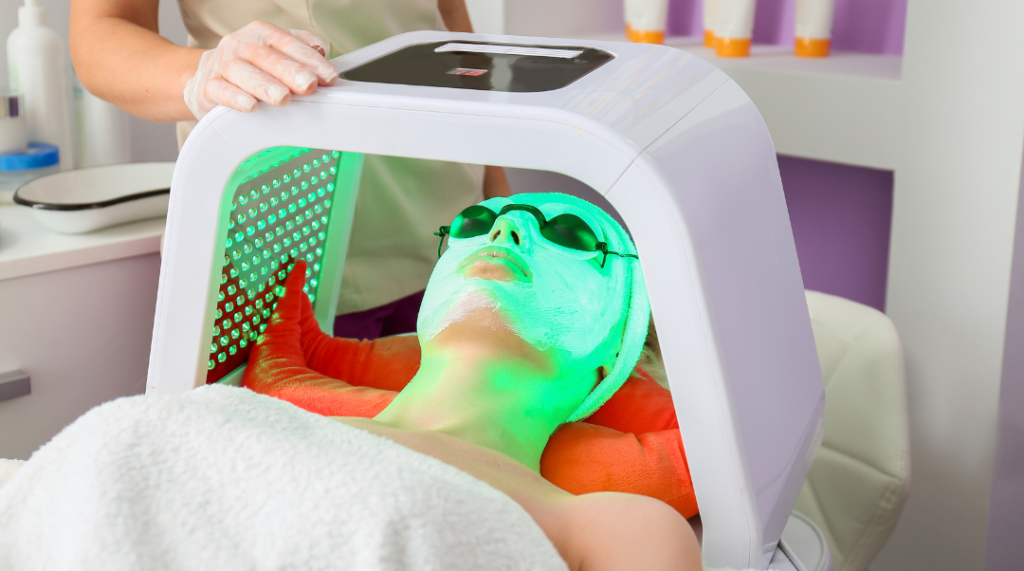What is GFC?
GFC treatment for pigmentation typically involves Glycolic Acid (GA), an alpha hydroxy acid (AHA) known for its exfoliating properties. GA aids in cell turnover, effectively reducing dark spots, age spots, and melasma by removing dead skin cells. Starting with a low concentration and gradually increasing usage helps prevent irritation. Consistent application, paired with daily sunscreen use, can improve skin tone and texture. Consultation with a dermatologist is advisable for personalized recommendations.
Is It For You?
– Individuals with pigmentation issues such as dark spots, age spots, sun damage, and melasma.
– Those seeking to improve skin tone and texture.
– People with concerns about uneven skin tone or hyperpigmentation.
– Individuals looking for non-invasive treatment options for pigmentation.
– Those who have consulted with a dermatologist or skincare professional for personalized recommendations.
– Individuals willing to commit to consistent application and sun protection during treatment.
Steps for GFC
The procedure for GFC (Glycolic Acid) treatment for pigmentation typically involves several steps:
1. Consultation: Before starting the treatment, it’s essential to consult with a dermatologist or skincare professional. They will assess your skin type, concerns, and medical history to determine if GFC treatment is suitable for you.
2. Preparing the Skin: Before applying the glycolic acid solution, the skin is thoroughly cleansed to remove any makeup, dirt, or oil. Some practitioners may also use a prepping solution to further cleanse and prepare the skin.
3. Application of Glycolic Acid Solution: The glycolic acid solution is then applied to the skin. The concentration of glycolic acid used may vary depending on the individual’s skin type and the severity of the pigmentation. It’s essential to follow the instructions provided by the skincare professional carefully.
4. Neutralization (if applicable): In some cases, the glycolic acid solution may be neutralized after a specific period to stop the exfoliation process. This step helps prevent excessive irritation or damage to the skin.

Post Care
Post-care following GFC (Glycolic Acid) treatment for pigmentation is crucial to ensure optimal healing and results. Here’s a typical post-care routine:
1. Gentle Cleansing: Use a mild, non-abrasive cleanser to wash the treated areas. Avoid harsh scrubs or exfoliants for at least a week after treatment.
2. Moisturize: Apply a gentle, hydrating moisturizer to soothe the skin and maintain its moisture barrier. Look for products containing ingredients like hyaluronic acid or ceramides.
3. Sun Protection: Apply sunscreen with a high SPF (SPF 30 or higher) every morning, even on cloudy days. UV exposure can worsen pigmentation issues, so sun protection is crucial to prevent further damage. Reapply sunscreen every 2 hours if you’re spending time outdoors.
4. Avoid Sun Exposure: Minimize sun exposure, especially during peak hours (10 am to 4 pm). Wear protective clothing, hats, and sunglasses when outdoors.
By following these post-care guidelines diligently, you can help ensure the best possible outcome from your GFC treatment for pigmentation while minimizing the risk of adverse reactions or complications.
Popular Questions
GFC treatment, which stands for Glycolic Acid (GA) treatment, is a skincare procedure aimed at addressing pigmentation issues such as dark spots, age spots, and melasma. Glycolic acid, an alpha hydroxy acid (AHA), is applied to the skin to promote exfoliation and cell turnover, resulting in a more even skin tone and reduced pigmentation.
Glycolic acid works by exfoliating the outer layer of the skin, which helps to remove dead skin cells containing excess pigment. This process promotes the growth of new, healthy skin cells with a more even distribution of pigment, resulting in a brighter and more uniform complexion over time.
While GFC treatment can be effective for many individuals with pigmentation concerns, it may not be suitable for everyone. Those with sensitive skin or certain skin conditions may experience irritation or adverse reactions. It's important to consult with a dermatologist or skincare professional to determine if GFC treatment is appropriate for your skin type and condition.
Mild side effects such as redness, irritation, and temporary dryness or peeling of the skin are common after GFC treatment. These effects are usually temporary and subside within a few days to a week. It's essential to follow post-care instructions provided by your skincare professional to minimize discomfort and promote healing.
Depending on your specific skincare goals and needs, GFC treatment can be combined with other procedures such as laser therapy or chemical peels for enhanced results. However, it's essential to consult with a dermatologist or skincare professional to determine the most appropriate combination of treatments for your individual concerns
The results of GFC treatment can vary depending on factors such as skin type, pigmentation severity, and adherence to post-care instructions. With proper skincare maintenance and sun protection, the results of GFC treatment can be long-lasting. However, periodic maintenance treatments may be needed to sustain optimal results over time.
